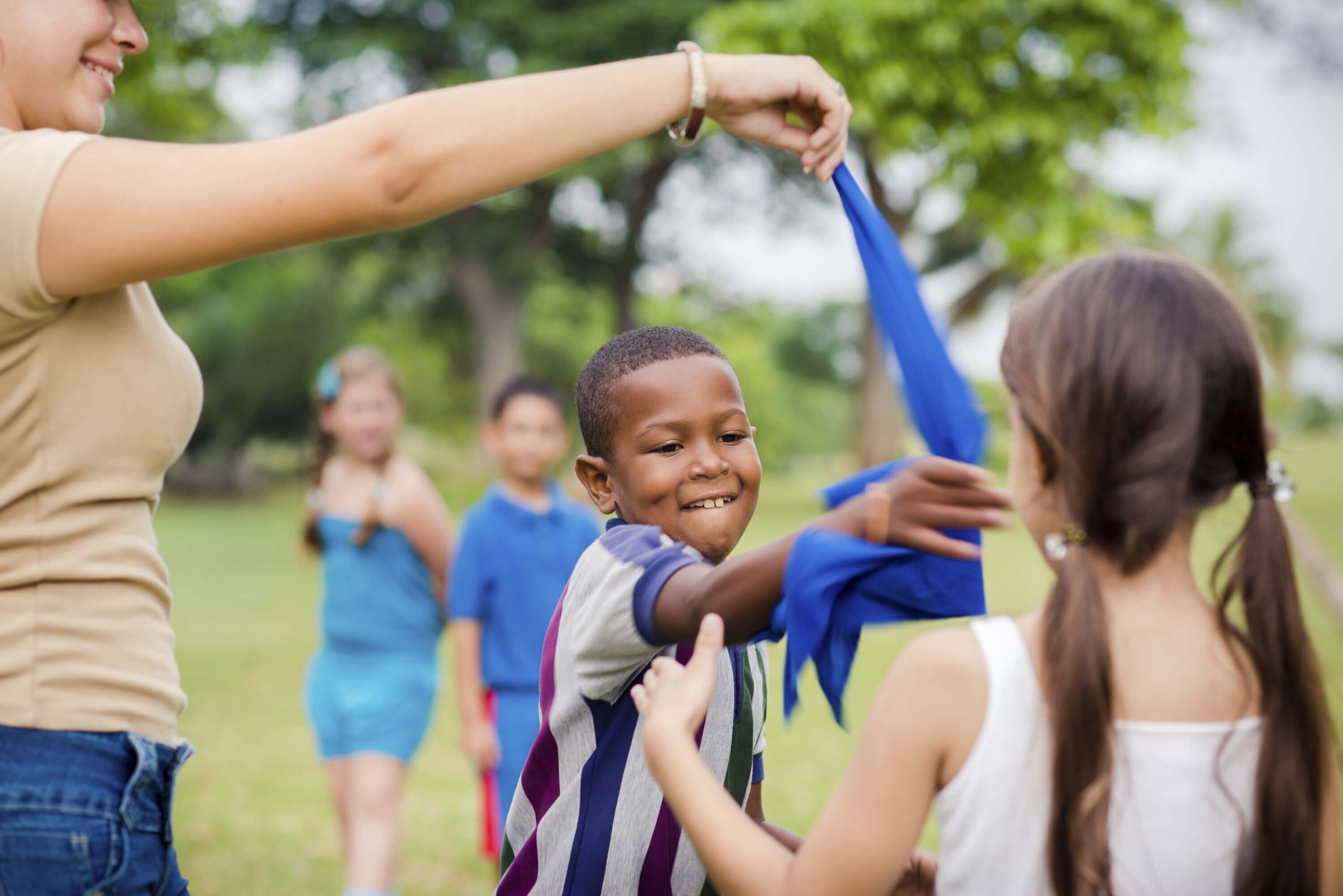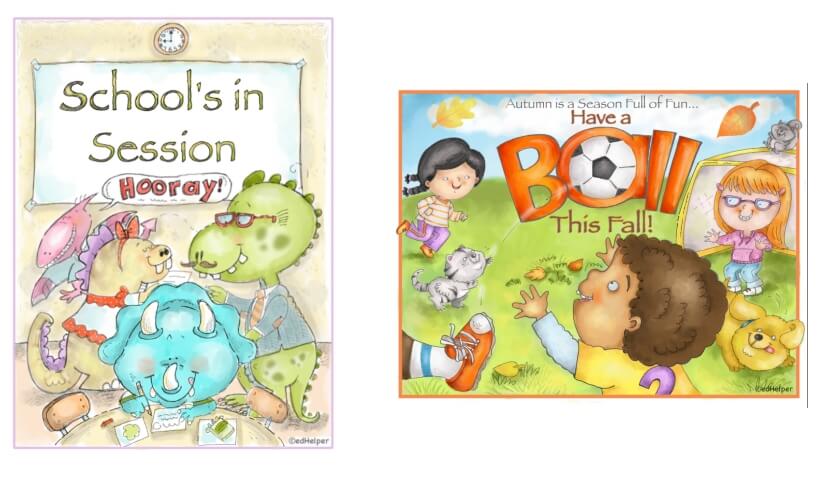What to Expect as a New First-Grade Teacher
By: edHelper Staff
Updated: Aug 3, 2023

Tips to Make the Most of Your First Year
First grade is a wonderful time for students. They learned how to be good students in kindergarten, and now they get to put some of the skills and knowledge they learned to good use. They are ready to start learning how to become independent readers, writers, and mathematicians, but they aren't quite there yet. They still need plenty of support.
The good news is that first graders are still excited about learning! That means they're open to new experiences and new ideas from a new teacher.
Here's what to expect, along with tips to make the most of your classroom, as a new first-grade teacher.
Decorate

Be Ready For Students Who Love to Rush
First graders have a zest for life! They're excited to learn, they're enthusiastic about their friends, and they love spending time on their interests. They jump into tasks with both feet, but they're also keenly aware that there are so many other things they want to do.
That means first graders often rush through tasks.
Don't worry, though! This is completely normal behavior for a first grader. You just have to figure out how you're going to deal with it.
Acceptance can go a long way, especially when dealing with parents who feel frustrated that their child hurries their handwriting and scribbles in answers as fast as possible on their math homework. It's normal for first graders to behave this way. It can be a relief for parents to know that there's nothing wrong with their students.
In the classroom, make sure activities are broken down into bite-sized chunks so students aren't tempted to blast through them as fast as possible. For example, when writing a book about dinosaurs, give the students one page with one dinosaur to color and write about at a time. When working on math problems together as a class or in a small group, complete a single problem before presenting the next one.
Although you may feel like a broken record, continue to remind them to slow down and take their time. Talk about the importance of taking their time and doing their best work. Even if they don't heed your advice now, you're laying the foundation for them to take more pride in the finished product rather than just blasting through the process when they get to second grade-and beyond.
Make Sure Math Homework is Manageable
Breaking things down into chunks is important in a classroom full of first graders who love to rush, but it means you have to break homework down into chunks too.
For example, when assigning workbooks in math, don't give students all the pages at once. That will just encourage them to try and get them done as quickly as possible. Instead, hand one page out at a time. When it has been completed and they turn it in, you can pass out the next page.
You can show students that slowing down and concentrating on one page at a time still enables them to achieve big things. Staple all their finished workbook pages together so students can see just how far they have come!
Create a predictable homework routine. For example, you might pass out math homework on Tuesdays with a reading log that's due every Friday. The routine will help otherwise extremely forgetful first graders remember when they have homework, but it also means parents know what to expect. Sitting down at the kitchen table together can become part of their family routine when they know which day to check their child's backpack for homework.
Use Manipulatives When Teaching Math
First graders still think concretely. They very much live in the physical world, learning by touching and interacting with the things around them.
That means manipulatives are still necessary, especially when teaching math.
As they learn how to add and subtract bigger numbers, it's important to give them manipulatives so they can see the math they're doing in action. It gives them practice grouping numbers in the real world so they can start thinking about those groupings more abstractly. For example, grouping 20 buttons into two sets of 10 makes it much easier to subtract 10 compared to subtracting by ones. When they see it in action with manipulatives, it's much more likely to stick.
Manipulatives can also include drawings. Whether they are creating tick marks in the margin of their paper, creating bundles of five, or drawing cats when counting, students should be allowed to draw pictures when solving math problems.
Create a Bank of Worksheets
Worksheets can really come in handy. Students can complete one after finishing an activity early, they can calm down with a worksheet after returning to the classroom from an assembly, and worksheets can be a great way to kill some time before specials. Not to mention, always having worksheets available can be a godsend for a substitute teacher who has some time to kill.
The trick is to make sure you have plenty of worksheets on-hand so you can pull them when you need them.
Set aside some time before the school year starts, once a month, or mid-year to make copies of worksheets you can use all year long.
Then, make sure you organize them. When they are clearly organized and labeled, you can make sure you give your students worksheets that are appropriate based on the subject and their learning level.
Be Prepared to Deal With Disappointment
First graders are naturally excited and enthusiastic, but this also means that they can get disappointed easily. They often have expectations about the way they think things should go, and when things don't go the way they expected, they aren't afraid to make sure you know they aren't happy about it.
It's easy to feel like you aren't doing enough, and you won't be the first or the last to feel judged by a room full of 6-year-olds.
Don't take your students' disappointment personally. Validate their feelings and let them know you can understand why they feel disappointed, but also stand your ground and let them know it is how it is. They might not get extra recess, a pizza party may need to be postponed, and a field trip may not be as exciting as they thought it was going to be, but that's okay! Then refocus their attention on something that they're thankful for.
Classroom management strategies can help too. From call-and-response attention grabbers to morning meetings and playing calming music, there are strategies you can use to get your class's attention, calm them down, and shift gears if things are getting a little out of hand.
Minimize Criticism
First graders are particularly susceptible to criticism. This is especially tough when you remember that first graders like to rush through things, which means they often make mistakes.
This doesn't mean you can't correct your students at all! But, instead of using criticism, reframe the feedback you give to your students.
For example, don't tell your student they got the answer wrong. Tell them their thinking was sound and you'd like them to double-check their work. Instead of telling them they aren't reading enough on their weekly reading log, challenge them to read five more pages next week.
You should also minimize asking students to redo their work. It almost never encourages students to slow down, but it does cause them to question their abilities.
Instead, think of strategies you can use to get students to slow down next time. Try open-ended questions, ask them to show their work, or help students get in the right mindset to slow down by having a class meeting before the next assignment.
Give Students an Outlet for Their Energy
All that first-grade enthusiasm comes with plenty of energy. It isn't uncommon for students to wiggle around or fall out of their chairs as they're doing their work.
Trying to make them stay still is futile. Instead, find ways to work with your students' energy levels. A few ideas include the following:
- Vary the pace of instruction and keep time frames short.
- Take movement breaks between subjects.
- Let students stand up to complete their work.
Playing games can also be a great way to help students work through high energy levels-but a word of caution: first-grade students can be highly competitive. If they're playing against each other, there are likely going to be hurt feelings and plenty of frustration, which cancels out any positive effects of taking a break in the first place.
Instead, focus on cooperative games that don't have any winners or losers. That way, students return to their seats, physically and emotionally ready to get back to work.
Teaching a classroom of enthusiastic first graders can be inspiring, but it can also be tiring! When you know what to expect and you're armed with the right tips and materials, you can make the most of your first year teaching first grade.
First Grade Resources













